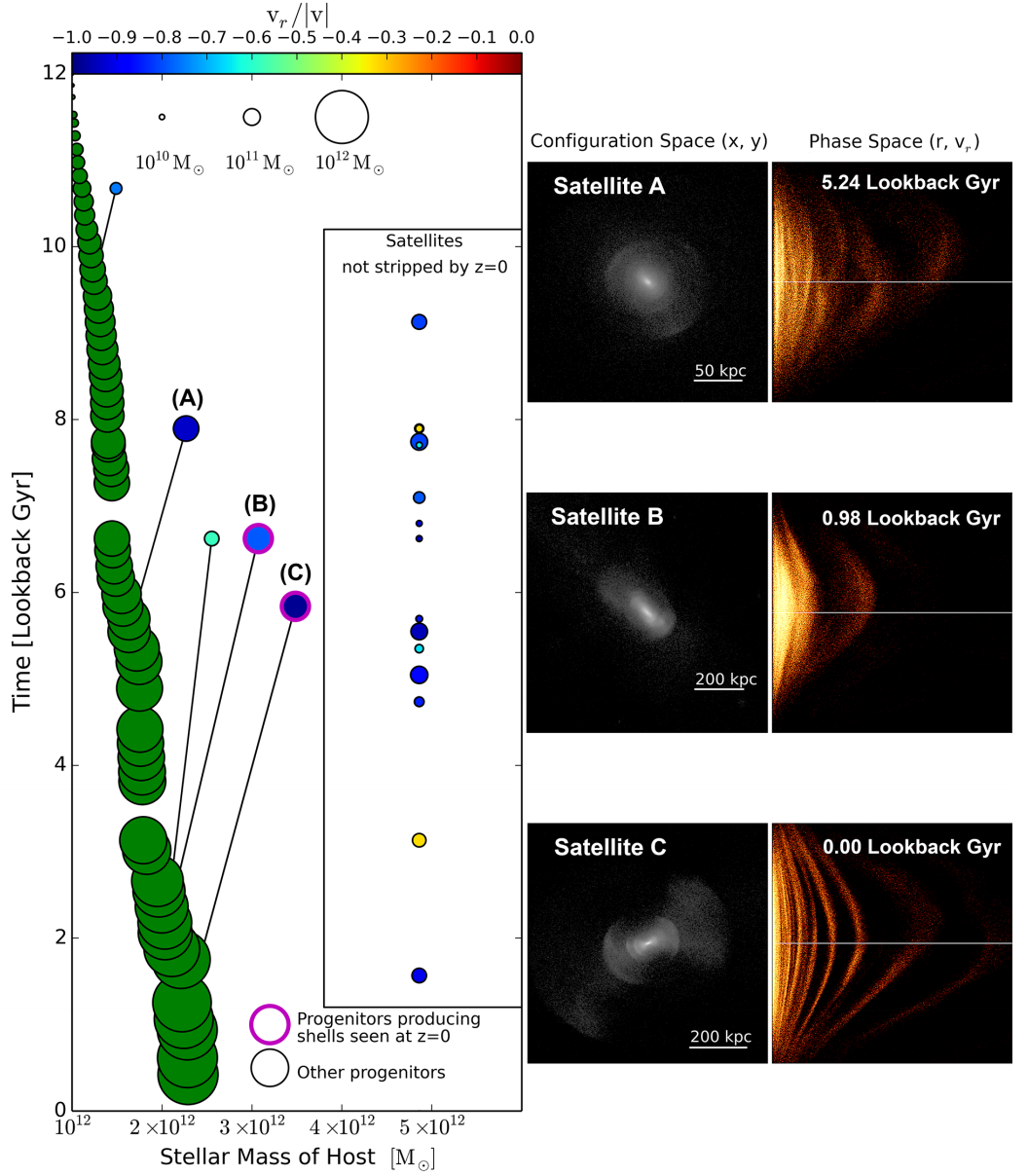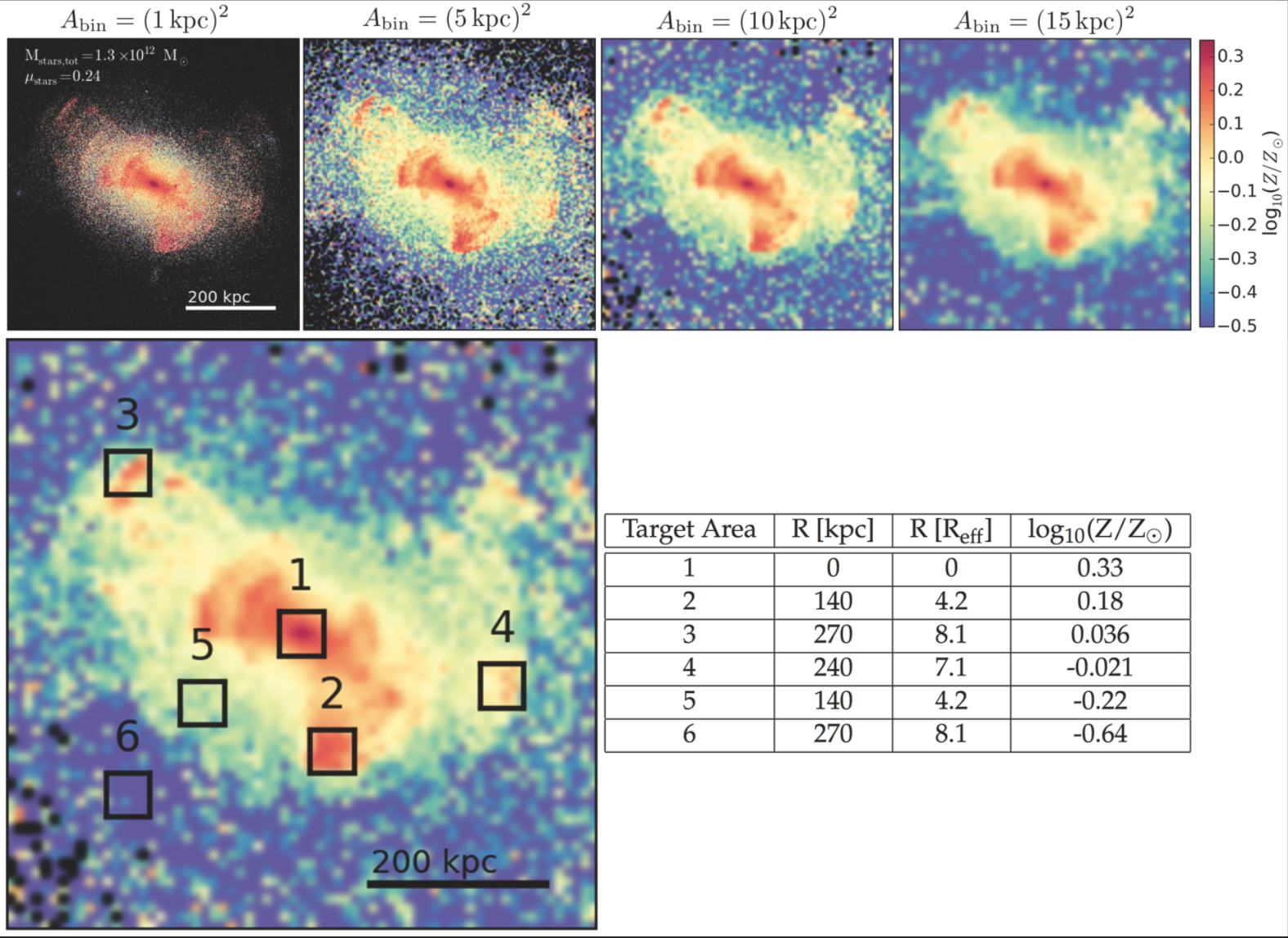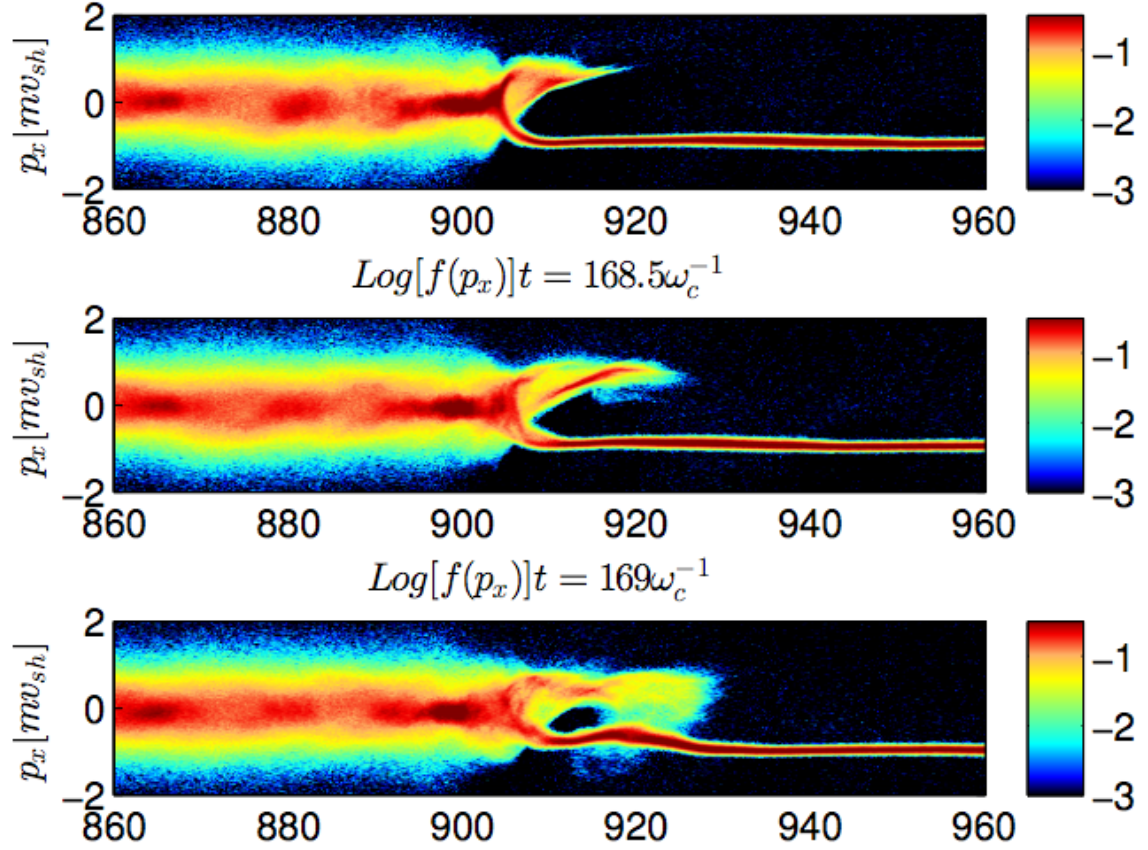Publications
Summaries of my papers.
ADS Publications
ArXiv Preprints
Google Scholar
Summaries of my papers.
ADS Publications
ArXiv Preprints
Google Scholar
Learn more about my other computational projects.
See my past and current outreach, advising and teaching projects.
Play this interactive game that let's you identify galaxies with stellar shells in the Illustris simulation.

We characterize the type of mergers responsible for forming shell galaxies.
Shells are low surface brightness tidal debris that appear as interleaved caustics with large opening angles, often situated on both sides of the galaxy center. In this paper, we study the incidence and formation processes of shell galaxies in the cosmological gravity+hydrodynamics Illustris simulation. We identify shells at redshift z = 0 using stellar surface density maps, and we use stellar history catalogs to trace the birth, trajectory and progenitors of each individual star particle contributing to the tidal feature. We find that shells observed close to z=0 in massive ellipticals form preferentially through relatively major mergers, with progenitors accreted on very radial orbits between 4 and 8 Gyrs ago. Our study indicates that, due to dynamical friction, more massive satellites are allowed to probe a wider range of impact parameters at accretion time, while small companions need almost purely radial infall trajectories in order to produce shells.

What are the metallicity signatures of stellar shells?
We extend the stellar history catalogs developed in our previous paper in order to investigate the metallicity of stellar shells around massive galaxies. We use a sample of 220 massive ellipticals \( ( \mathrm{M}_{200\mathrm{crit}} > 6 \times 10^{12} \, \mathrm{M}_\odot) \) from the Illustris simulation, with 39 of those galaxies having shell tidal features indentified in both configuration and phase space. We find that outer shells are often times more metal-rich than the surrounding stellar material in a galaxy’s halo, as a result of the fact that many of these stellar shells are the by-product of major mergers.
For a galaxy with two different satellites forming z = 0 shells, we find a significant difference in the metallicity of the shells produced by each progenitor.
We thus predict that multiple shell-forming progenitors, as well as different generations of shells, could leave specific signatures in the metallicity distribution of stars in shells. We also find that shell galaxies have higher mass-weighted logarithmic metallicities ([Z/H]) at 2 – 4 effective radii compared to galaxies without shells. Our results indicate that observations comparing the metallicities of stars in tidal features, such as shells, to the average metallicities in the stellar halo can provide information about the assembly histories of galaxies.

Placing constraints on axion dark matter using data from dwarf spheroidal galaxies.
Unlike the cuspy profiles of cold dark matter, solitons composed of ultra-light axions (ULAs) predict central cores which may resolve the "cusp-core" problem of CDM. We investigate the gravitational collapse of ULAs by numerically solving the non-linear self-gravitating Schrödinger-Poisson system.
Using Monte-Carlo techniques, we fit stellar-kinematic data of dwarf spheroidal galaxies and find that in order for ULAs to resolve the cusp-core problem (without recourse to baryon feedback or other astrophysical effects), the axion mass must be below \( m_a < 1.1 \times 10^{-22}\) eV.

How do particles get accelerated in collisionless astrophysical plasma shocks?
We investigate the shock structure using a hybrid simulation (kinetic ions -- fluid electrons) and construct a model capturing the physics relevant for ion injection at shocks with arbitrary strengths and magnetic field inclinations. We find that shocks propagating almost along the magnetic field reform quasi-periodically on ion cyclotron scales, and ions impinging on the shock when the discontinuity is the steepest are specularly reflected - which is a key ingredient for being injected into diffusive shock acceleration.